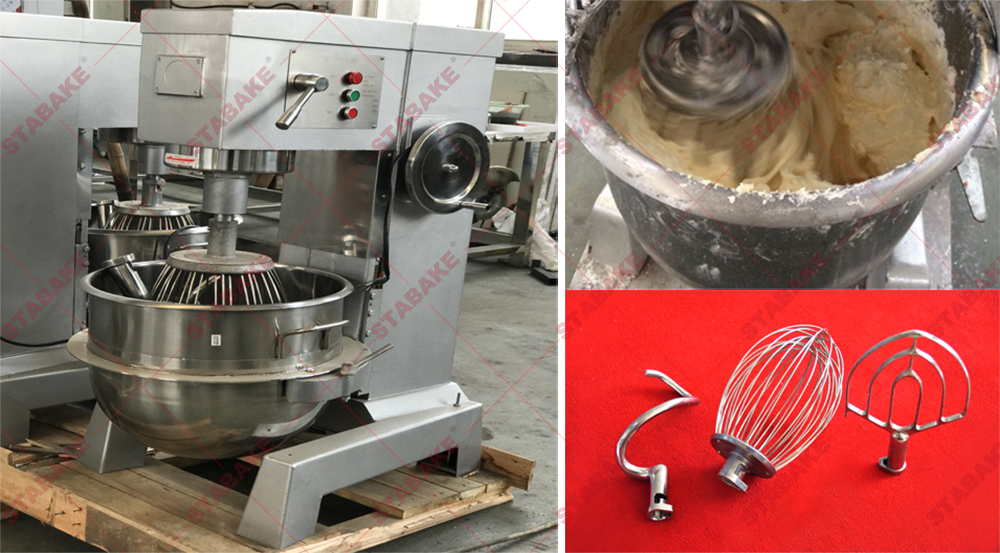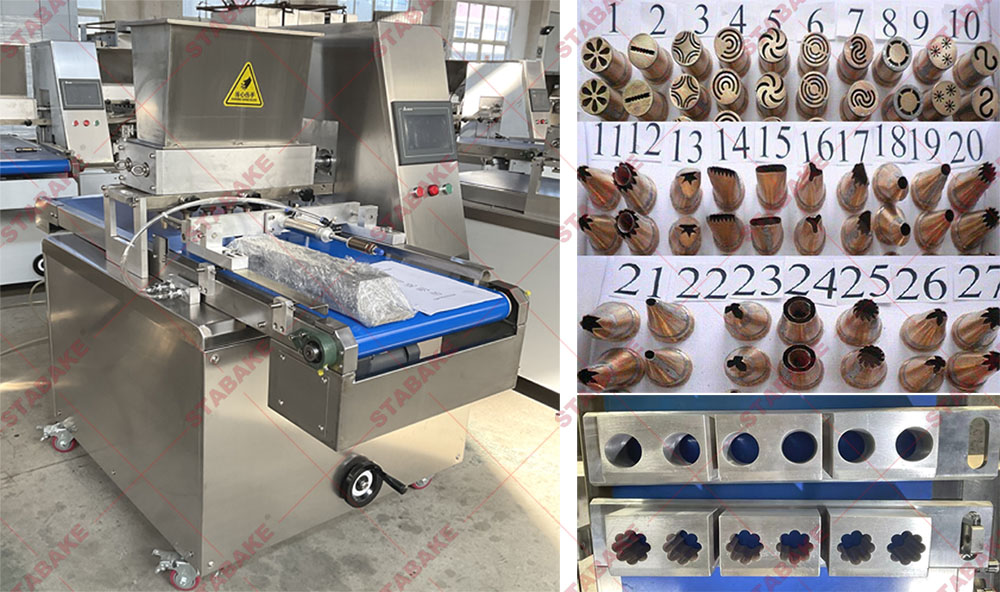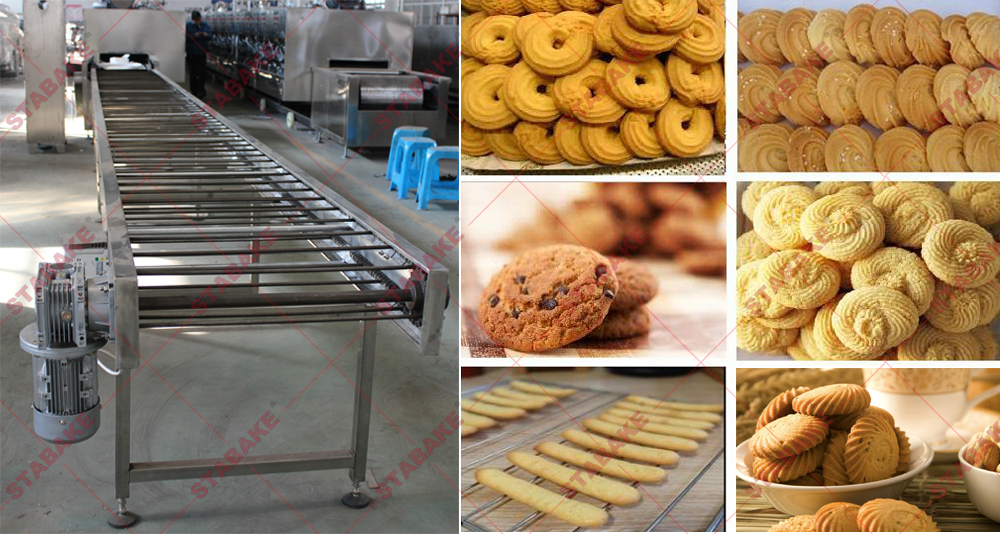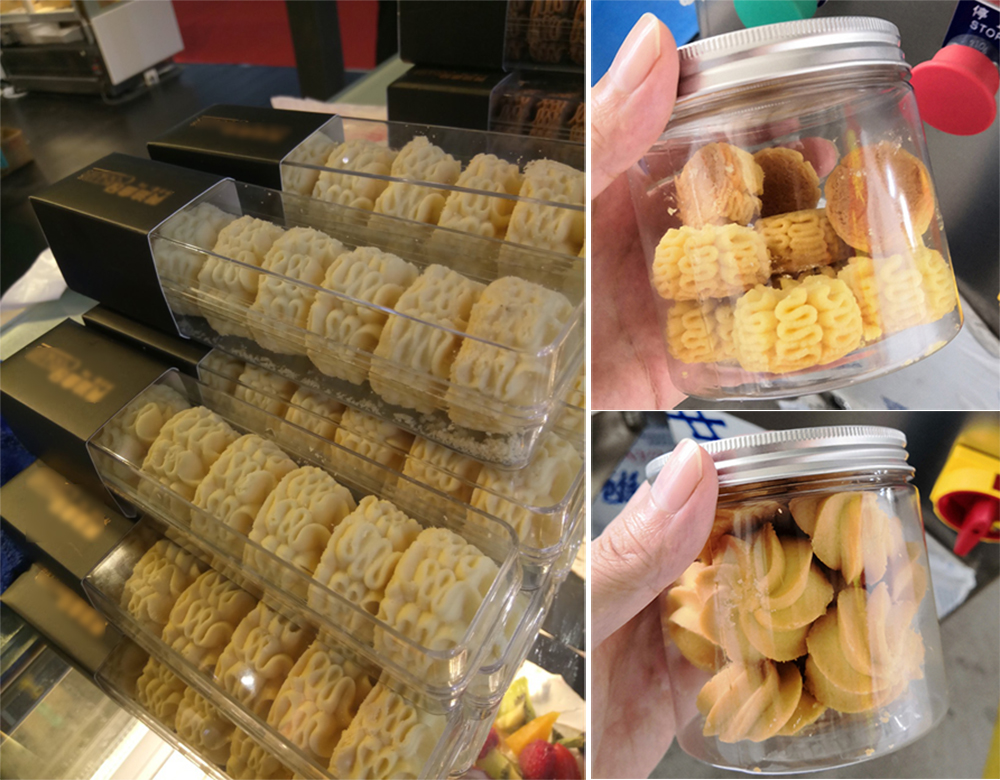Cookies, as a popular snack and refreshment, cannot be produced on a large scale and with high quality without modern and automated production lines. A complete cookie production line efficiently and accurately transforms raw materials into golden, crispy, delicious cookies in various shapes. Its main process flow and core equipment include the following key links:
1.Dough Mixing:
The raw materials are put into the multifunctional mixer in a specific order (usually mixing powder and solid fat/butter first, and then adding liquid). According to the type of cookies (crisp, tough, brittle), different stirring paddles (paddle-shaped, hook-shaped), stirring speed and time are used to emulsify, mix, and control gluten (limited expansion or inhibition), and finally form a uniform dough that meets the process requirements.

2. Cookie molding:
• Extrusion molding: (applicable to soft dough or cookies with particles) The dough is forced through an extruder head equipped with a specific nozzle (round hole, star-shaped hole, etc.) to extrude strips or specific patterns, and then cut into specified lengths by a wire cutter or a rotary cutter.
• Wire cutting molding: The dough is extruded into thick strips through the extruder head and cut into small pieces vertically by a high-speed fine wire (commonly used to make American chocolate chip cookies).

3. Tunnel Oven Baking:
Tunnel oven: The formed raw dough (raw cookies) are evenly arranged on a high-temperature resistant mesh belt (or steel belt) and pass through a long tunnel oven at a uniform speed. The oven is usually divided into multiple heating sections (temperature zones), and the temperature (usually between 160°C - 200°C), heat transfer method (conduction, convection, radiation) and humidity are precisely controlled to achieve the ideal "setting - expansion - coloring - dehydration" process, giving the cookies a crispy or soft taste, attractive golden color and unique flavor. The baking time is precisely set according to the size, thickness and recipe of the cookies.

4. Cookies Cooling:
Multi-layer cooling line/cooling tunnel: Freshly baked cookies are very soft and fragile, and the temperature is very high. They are transferred to a multi-layer, long-distance cooling conveyor line and slowly cooled (usually 10-20 minutes) at room temperature or in a mild forced ventilation environment. The cooling process makes the cookies firm and crisp (or remain soft), and the moisture and temperature are evenly distributed in preparation for subsequent packaging. Insufficient cooling can cause condensation, softening, and even mold after packaging.

5. Cookie Packaging:
• Automatic packaging machine: Qualified cookies are fed into the automatic packaging machine according to sales specifications (such as bag, box, can, roll). Various packaging forms:
• Pillow packaging: Single or multiple cookies are neatly arranged, wrapped with composite plastic film (often containing aluminum foil barrier) into pillow-shaped bags, and heat-sealed and cut.
• Box/tray packaging: Cookies are packed into prefabricated paper boxes or plastic trays, then coated, heat-sealed or covered with paper lids.
• Can/barrel packaging: Cookies are quantitatively filled into metal cans or plastic barrels.





















